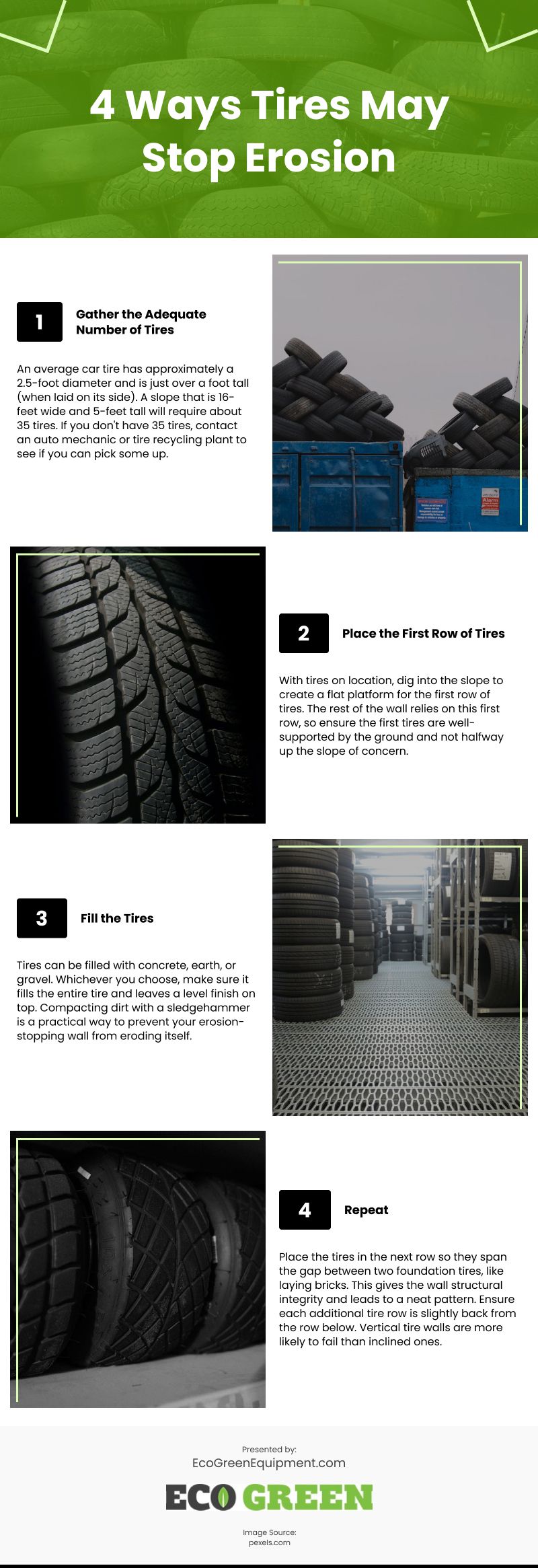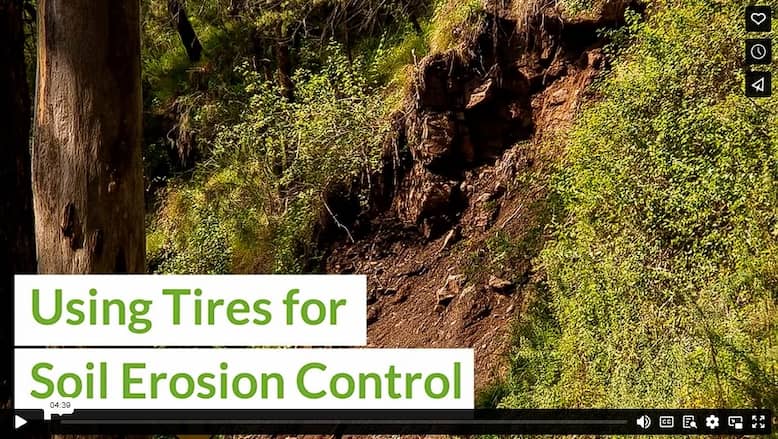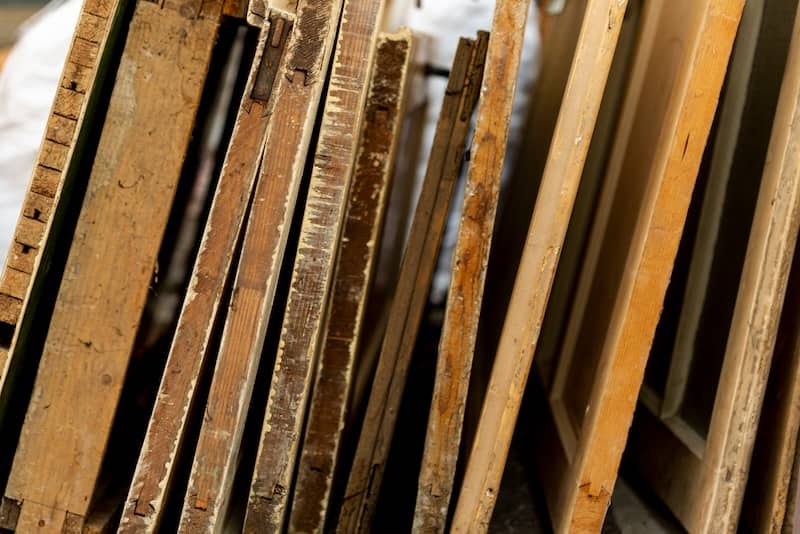Do you have an erosion problem on your property? Is your backyard shrinking every time it rains? Are you worried about a landslide damaging your property?
Rubber mulch from recycled tires is widely used in landscaping. It lasts longer than most other mulches and saves tires from landing in the dump. Rubber mulch is a product of tire shredder equipment, which chews tires into small rubber pieces and separates the nylon and wire out. However, whole tires can be used in landscaping, too, especially when you have an erosion problem.
Erosion as a Natural Phenomenon
Erosion isn’t necessarily a bad thing. Everything gradually erodes over time as weather, floods, and earthquakes take their toll. Nature has also devised a clever way to control erosion from happening too quickly. Plants. The root systems from trees, shrubs, and grasses are an extremely effective way of holding slopes and entire mountains together.
We make a problem for ourselves when we remove all the vegetation on a bank. Unfortunately, some construction projects, land uses, or weed clearances make de-vegetating a bank unavoidable. All of a sudden, nothing is holding the dirt together, and it all starts coming down.
Common Ways to Stop Erosion
Over the centuries, people have battled against erosion in many different ways. Modern innovations have led to many ideas for various situations and scales. Here are some of the more common ones:
- Terraces – Keeping a majority of the land flat helps stabilize an area and avoid downhill slides.
- French Drains – Water is the main culprit when it comes to erosion. Diverting water away from a slope can help keep it intact.
- Retaining Walls – Potentially the most common solution implemented, retaining walls can be made from concrete, wood, sandbags, or tires.
- Planting – If possible, deep-rooting plants are likely the best way to go in the long term. It’s hard to beat nature’s design.
- Riprap – Along rivers and the coast, riprap is a more natural solution than retaining walls with similar benefits.
Controlling Erosion with End-of-life Tires
While concrete retaining walls and planting native ground cover might be feasible for some, these methods can often cost more than expected. Simply holding your property together shouldn’t cost an arm and leg. End-of-life tires provide a great way to reuse tires and manage your erosion problems with minimal cost. When placed with precision and forethought, tire walls do an amazing job at reducing erosion.
Four Steps to Using Tires to Stop Erosion
1. Gather the Adequate Number of Tires
An average car tire has approximately a 2.5-foot diameter and is just over a foot tall (when laid on its side). Using these measurements and the size of your slope, approximate how many car tires will be required.
For example, a slope that is 16-feet wide and 5-feet tall will require about 35 tires. It’s safer to round up and end up with a few left over. If you don’t happen to have a pile of 35 tires (most of us don’t), contact an auto mechanic or tire recycling plant to see if you can pick some up.
2. Place the First Row of Tires
With tires on location, dig into the slope to create a flat platform for the first row of tires. The rest of the wall relies on this first row, so ensure the first tires are well-supported by the ground and not halfway up the slope of concern. Starting with a level and solid foundation will set you up for long-lasting success.
3. Fill the Tires
Tires can be filled with concrete, earth, or gravel. Whichever you choose, make sure it fills the entire tire and leaves a level finish on top. Compacting dirt with a sledgehammer is a practical way to prevent your erosion-stopping wall from eroding itself. Putting soil in the tires also allows you to plant grass, flowers, or other plants in the wall, beautifying the space and adding strength.
4. Repeat
Place the tires in the next row so they span the gap between two foundation tires, like laying bricks. This gives the wall structural integrity and leads to a neat pattern. Ensure each additional tire row is slightly back from the row below. Vertical tire walls are more likely to fail than inclined ones.
Other ways scrap landscapers can use scrap tires to control erosion is by using bales of tires held together by metal wires. These need to be carried and placed by heavy machinery, but walls made from bales are generally faster to construct.
Solid and Sturdy
Erosion is a naturally occurring process that sometimes happens too quickly or in places that threaten infrastructure. There are lots of different methods to strengthen slopes. Planting out an area is the most natural and effective erosion control. However, the cost, time, and soil required often leave landscapers looking for alternate solutions. Scrap tires are an affordable way to fortify your yard, driveway, or property’s foundation. Whether placed individually or in bales, they are a great way to use old tires in a meaningful way.
Infographic
Soil erosion is an immense ecological concern, leading to a depletion in the quality of topsoil and deterioration of water resources. Fortunately, there are several successful responses to soil degradation, one using tires for erosion control. This technique requires minimal effort yet provides maximum impact. It has been proven extremely effective in preventing soil loss. This infographic will be your go-to guide in repurposing tires to help reduce soil erosion. Learn the steps now, and start making a difference today.

Video





